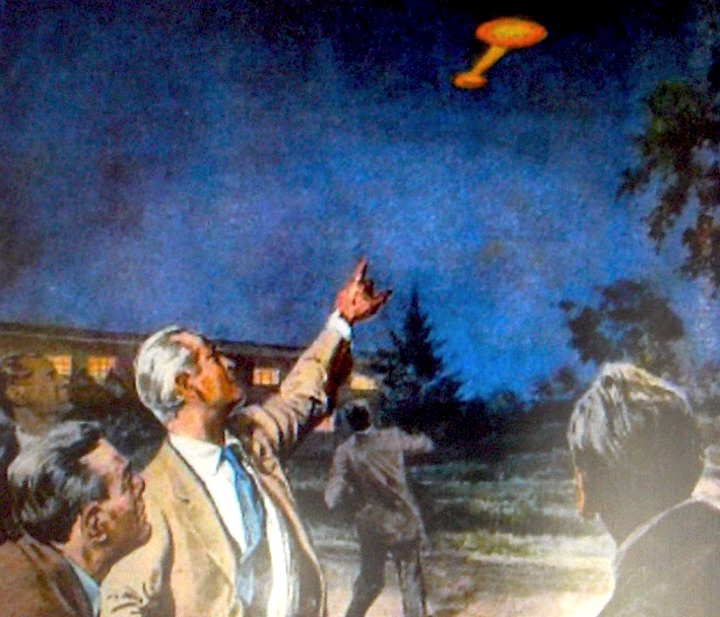2.07.2021

There are few things more profound than the question of whether or not we are alone in the universe. If we were to discover microbes floating around Venus, find signs of past life on Mars, or receive a radio signal from intelligent beings, the course of human history would be forever changed.
The search for life requires that we keep an open mind. With the U.S. government now publicly discussing UFOs — unidentified aerial phenomena, in modern parlance — and confirming the authenticity of genuinely strange videos, it’s easy to get swept away by thoughts of flying saucers and little green men.
We must also be cautious and apply scientific scrutiny to fantastical news. But how? While no one guide can unpack the specifics of every UFO sighting, here are three questions you can ask yourself to judge extraordinary claims that may lack extraordinary evidence.
Does the UFO sighting violate our understanding of physics?
Many observations of UFOs require them to break the laws of physics as we know them, by either moving extremely fast and suddenly or by not showing up on radar or other sensors.
Humanity knows the laws of physics very well. We use physics to launch space missions, take pictures of black holes, and map the universe in 3D.
Science is an ongoing process, so it’s possible that we could discover something that profoundly reshapes our understanding of the cosmos. But when evaluating UFO claims, it’s important to consider whether other explanations are more likely.
Does it require a large conspiracy involving aliens?
Conspiracies are hard. The larger the conspiracy, the more points of failure it has, and the harder it is to keep secret. Even groups who are good at keeping secrets like the CIA run the risk of rogue individuals exposing them, as was the case in Edward Snowden’s disclosure of classified information.
This is all the more difficult for conspiracies that cross political, geographic, and cultural boundaries that would normally inhibit cooperation.
If extraterrestrials visit Earth, would they prefer one nation over another? The fact that we don’t see individual nations rushing to share hard data on UFOs suggests that there may be few credible sources to be found.
Is there a simpler explanation?
Occam’s Razor is the scientific and philosophical principle that says simpler explanations are more likely than complex ones. It can be applied to UFO sightings: is there an explanation that does not break the laws of physics, or that does not require a perfectly executed conspiracy?
As exciting as UFO sightings might seem, there are often simpler explanations like classified activity, human error, optical illusions, and computer glitches. The human brain is drawn to novelty, but it’s important to consider all possibilities — even the boring ones.

The search for life continues
Judging by the popularity of science fiction books, TV, and movies, the concept of aliens isn’t going away anytime soon. Whether it’s extraterrestrials influencing human development in 2001: A Space Odyssey or faster-than-light travel portals in The Expanse, we are drawn to ideas that defy our understanding of how the world works.
Fortunately, we can also satisfy that curiosity scientifically. We are building a space probe that will study the moon Europa for signs of an ocean that could support life. A telescope launching this year will examine distant exoplanets for telltale signs of life. There are groups who continuously scan the sky for signals from alien beings.
In the end, we might be all alone. Or we could learn that the cosmos is flush with intelligent beings, some of whom have already visited Earth. It’s our responsibility to search for life with an open mind — but not so open that our brains fall out.
Quelle: The Planetary Society
